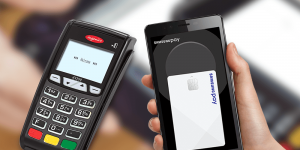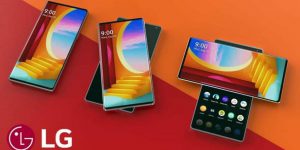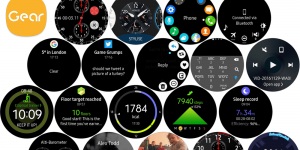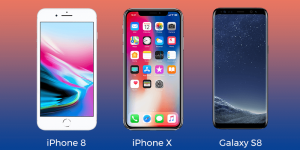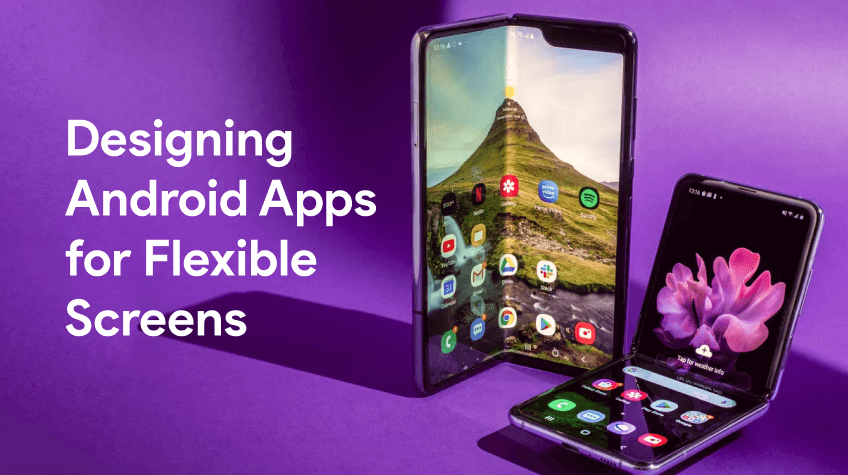
Have you noticed the change in frequency in the number of hands you have seen folding their mobiles and putting them into their pockets? There’s evidently been an upsurge in that rate! Foldable smartphones announced their entry into the market in 2019, with Samsung being the sole player. Samsung GalaxyFold was the first ever foldable device launched in India. Soon after, the South Korean conglomerate Oppo, Vivo, Motorola, and Xiaomi entered with their models. These Foldable smartphones provide users with a more enlarged and adaptable screen compared to their traditional counterparts.
According to several reports, these new-age devices are expected to experience a rise of around 80% by 2025. Statista put forward a survey that demonstrates that 55% of mobile users in the US, South Korea, and China are willing to buy foldable phones as their new set in 2024.
Furthermore, Maximizemarketresearch estimates Foldable Smartphone Market is expected to reach US $ 57.38 Bn by 2029, at a CAGR of 21.3% during the forecast period.
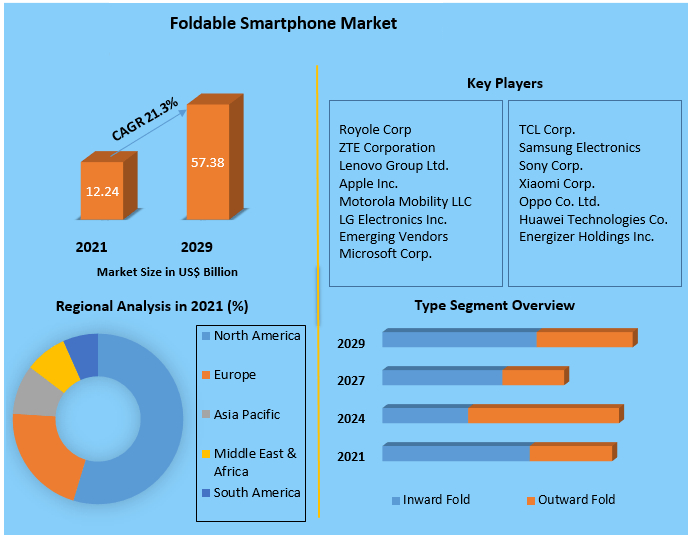
With such a huge market rise, the boom in Android app design for Foldable devices has also skyrocketed. Thus, it can be a goldmine for both retail and institutional investors in the near future. The major factor that is still preventing this sector of appliances from establishing a prominent segment in the market, is the high price.
What Are the Distinguishing Factors Between Foldable and Normal Smartphones?
Basically, Foldable smartphones and common phones differ in their functionality and versatility. If you are someone who’s fond of larger displays of tablets yet enjoys the portableness of mobile devices – foldable mobiles are the one for you, my friend! These mobiles generally possess an OLED or AMOLED display coupled with seamless screen continuity. Its tablet-like display allows you to enjoy your favorite TV shows, YouTube sketches, or business management with greater details.
You can track stock charts in a wider view than a typical smartphone screen while also avoiding the necessity of carrying a laptop. The portability of such gadgets also steals the show, as many models come in a “book”-like shape. They can be treated like flip mobile and bent inwards to fit in your pocket or palm.
In this busy world, who wouldn’t vote for multitasking? Using these foldable mobiles offers you the power to run multiple applications in split-screen mode. With technological advancements, all windows can be functional simultaneously. You can scroll through WhatsApp, write documents, play games, and watch movies – all at once! Haha! That’s quite a myriad combination of tasks, isn’t it?
Despite all these features, the market share of foldable devices has yet to go close to traditional mobiles due to their hefty price tag. The advanced hardware, building costs, and demanding engineering fail to place it in a “product-for-all” category! Moreover, traditional phones are much slimmer and less bulky than folded ones.
Aspects Developers Need To Be Aware of Before Developing Applications for Foldable Smartphones
Companies developing mobile apps are formulating many new strategies for developing applications for these advanced models. Investments in the research and development sector of these organizations are being poured in an attempt to grab this near-nascent market.
The critical aspects of Android app development for Foldable device includes –
1. Two States-Folded and Unfolded

Primarily, there are two major states of these foldable devices that app developers need to pay attention to. In the unfolded state, the device acts as a full-length tablet, which provides the user with a huge screen to scroll. While in the folded state, it resembles a common mobile.
2. One-handed or both-handed design
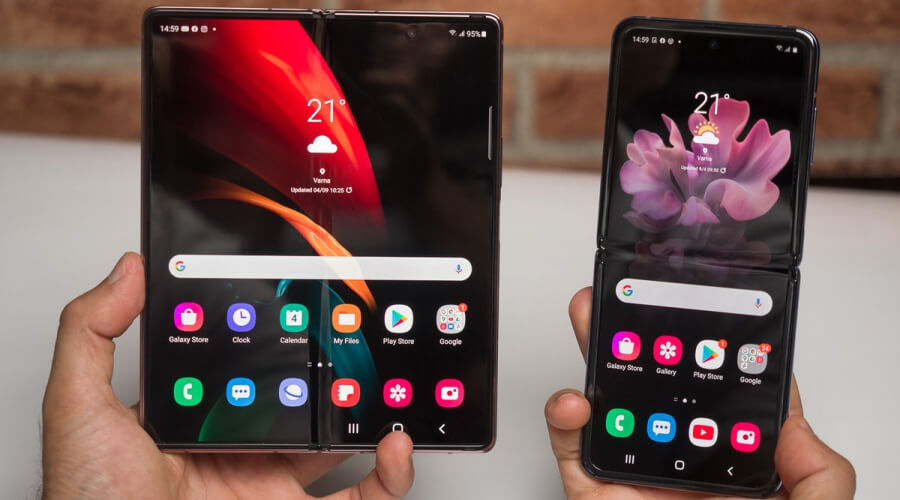
You can either handle the folded phone in your 1 single hand as a palm top or hold it in both hands in its unfolded state. The app-designing team has to ensure that the application runs smoothly in both scenarios, instrumentally handling the screen size and functionality.
3. Multi-Resume Layout
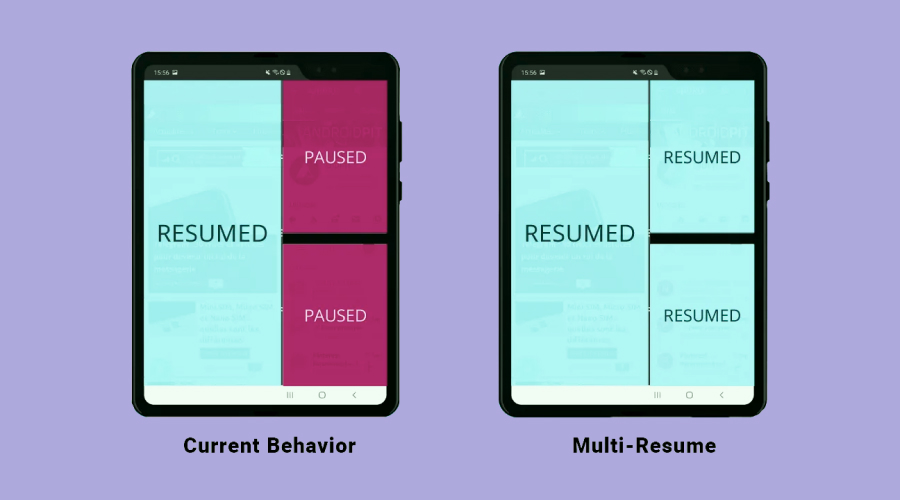
Before Android 10, two apps were unable to function simultaneously in the background. Versions after that support split-screen modes in full form. Therefore, developers must ensure that their product runs applications without pausing the others in the background. Thus ensuring multitasking completely.
4. Multi-window support

Do you know what one of the prime features of folded devices is? It’s multi-window support! The role of app developers here is to ensure the user can effortlessly toggle from one window to the other without any resulting lag or glitch.
5. Screen Continuity
Folding screens are all fun and cool until the content layout and dimensions mess up and completely rupture while the user switches from its folded to unfolded state or vice-versa. Screen continuity should be a pivotal factor to work on for developers here! When the form factor of the screen alters, the grid layout and dimensions of the content should automatically adjust itself to the screen size. In one word, the operation should be responsive.
Factors Affecting the Quality of the Production of Apps for Foldable Smartphones
Here are the top fields that will determine the quality of an application for any organization investing in foldable smartphones.
1. Ensuring quality over quantity
The quality of any simple application today, will only require a single faulty glitch to earn a bad word of mouth amidst the tech community. Thus, the companies or the app developers should be extremely cautious while designing. Considering, the multiple parameters like different screen states, and form factors, it is a quite tough nut to crack to gain a loyal user base.
Therefore, quality shall not be compromised anyhow for meeting deadlines!
2. Meticulous Testing
Unless rigorous testing stages are executed at the various stages of the software development life cycle(SDLC), the quality discussed can’t be achieved. With testing, developers can be aware of the possible glitches and bugs that may appear in real-time use. Features like Multitasking, split-screen, and toggling displays cannot be achieved without this! One wrong step may lead to uninstallation.
3. Prioritizing user feedback and updates above all
Foldable mobile computing technology is quite a new realm to discover, as development is quite in its early stages. Unprecedented issues may persist even after ensuring all checkboxes. Here, user feedback acts as the undisputed ultimate remedy. So, make sure to give time to any difficulty a user posts in the community forum.
Conclusion
It’s a no-brainer that today’s technology is ever-evolving. Foldable devices are the future! Thus, investment in future-securing assets shall be made by any rational business. Budding and seasoned developers shall focus more and more on the research and development of applications for foldable devices. Updates and modifications in the app should be constantly implemented as per the requirements. Choosing the professional Android app development service provider is your best bet to design app for foldable devices that fits remarkably well with flexible screens. This will ensure an ever-lasting experience for users operating on these revolutionary devices!

